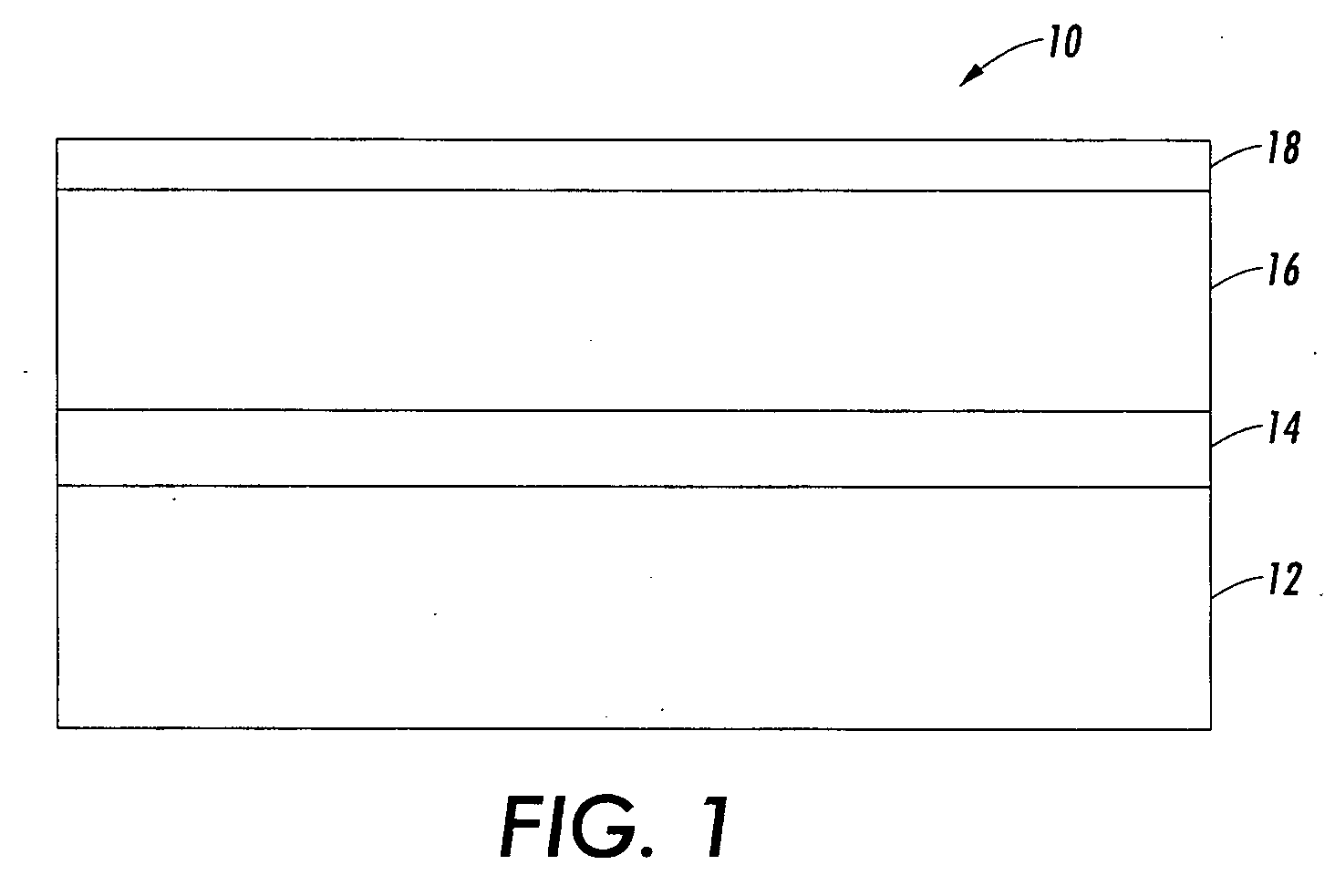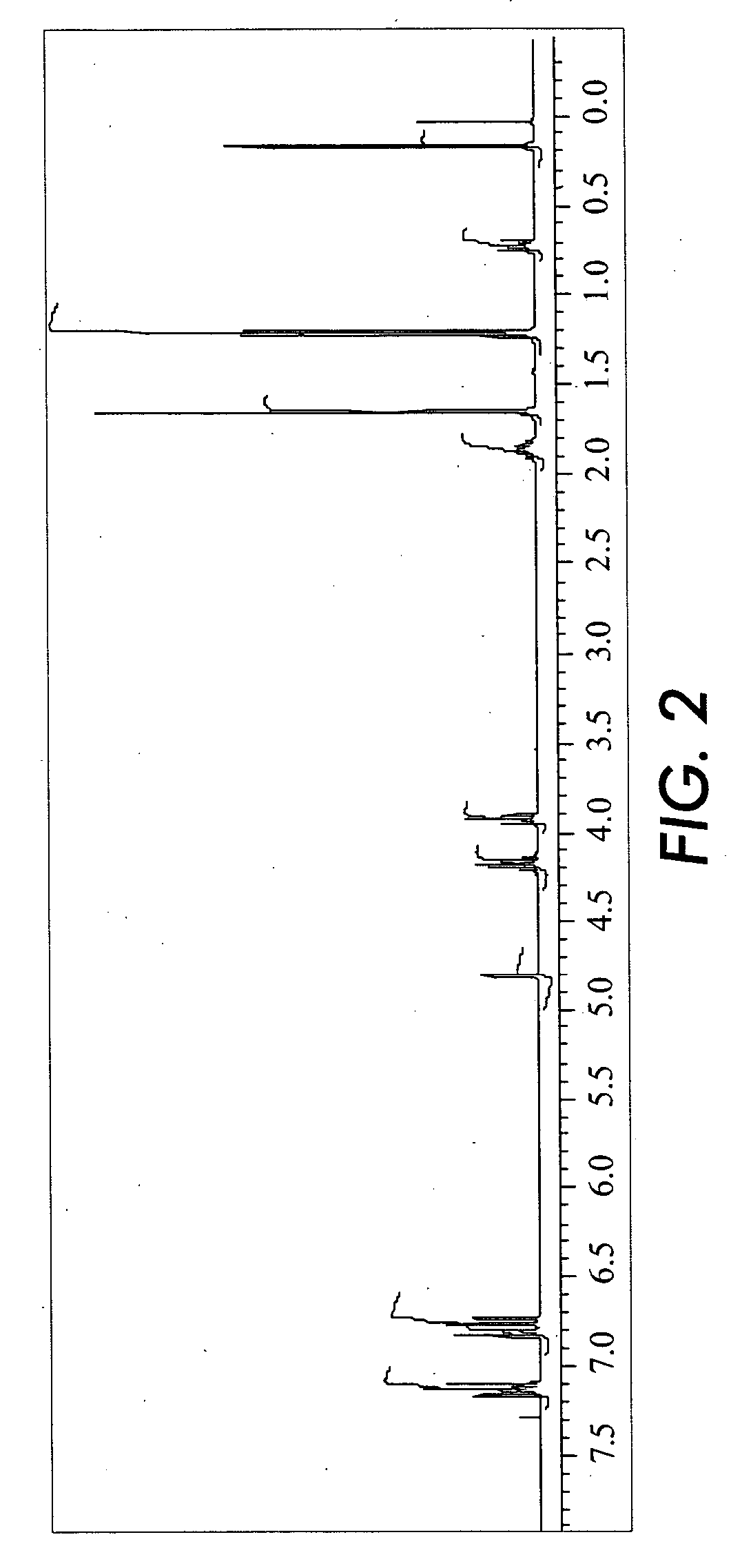Imaging member
- Summary
- Abstract
- Description
- Claims
- Application Information
AI Technical Summary
Benefits of technology
Problems solved by technology
Method used
Image
Examples
example 1
[0101]
[0102] Bisphenol A (BPA) (22.83g) was dissolved in isopropanol (100 mL) in a 500 mL round-bottomed flask. To the solution was added a solution of 20 wt % of potassium isopropoxide in isopropanol (49 g) through a dropping funnel. After addition, the solution was stirred at room temperature for 3 hours and the excess isopropanol was removed by rotary evaporation. The remaining solid was dissolved in dimethylformamide (DMF) (100 mL). To the solution was added iodopropyldiisoproxymethylsilane (36.33 g) and the temperature was maintained at about 70° C. for an hour, then cooled to 25° C. Potassium iodide (21 g) was added into the solution and it was stirred for about an hour. Hexane (300 mL) was added to extract the bis-silane by product. Then, cyclohexane (300 mL) containing 10% toluene was added to extract the product. The organic layer was collected and washed with deionized water and brine, and dried over sodium sulfate. The excess solvent was removed by rotary evaporation and ...
example 2
Siloxane Overcoat Coating Solution Preparation
[0106] Crosslinked siloxane overcoat layers were prepared including a silane-phenol compound. Specifically, the procedures of Comparative Example 1 were repeated, except that the silane-phenol compound of Examples 1 was included. Specifically, the formulation and procedure were the same as Comparative Example 1 except the binder material 1,6-bis(dimethoxymethylsilyl)-hexane was changed to the silane-phenol compound of Formula (Ia).
example 3
Siloxane Overcoat Coating Solution Preparation
[0107] Crosslinked siloxane overcoat layers were prepared including a silane-phenol compound. Specifically, the procedures of Comparative Example 1 were repeated, except that the silane-phenol compound of Examples 1 was included. Specifically, the formulation and procedure were the same as Comparative Example 1 except the binder material 1,6-bis(dimethoxymethylsilyl)-hexane was changed to the silane-phenol compound of Formula (Ia). In addition, bis(hydroxymethyl)-p-cresol (1.8 g, 10 wt % of total solid in the overcoat) was added at the last stage of the coating solution preparation.
PUM
 Login to View More
Login to View More Abstract
Description
Claims
Application Information
 Login to View More
Login to View More - R&D
- Intellectual Property
- Life Sciences
- Materials
- Tech Scout
- Unparalleled Data Quality
- Higher Quality Content
- 60% Fewer Hallucinations
Browse by: Latest US Patents, China's latest patents, Technical Efficacy Thesaurus, Application Domain, Technology Topic, Popular Technical Reports.
© 2025 PatSnap. All rights reserved.Legal|Privacy policy|Modern Slavery Act Transparency Statement|Sitemap|About US| Contact US: help@patsnap.com



